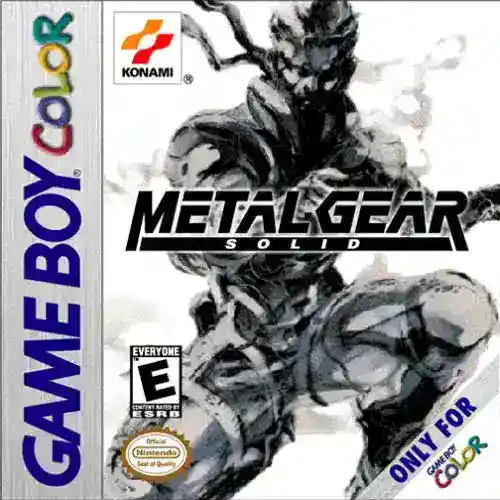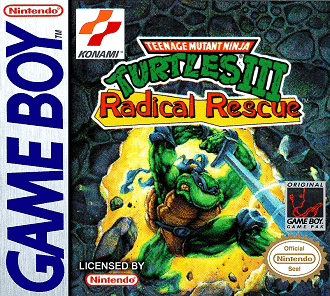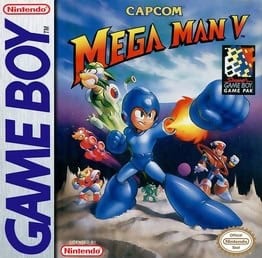Having already taken a look at “hidden gems” for the NES and Sega Genesis, I wanted to move forward and shed light on other really great (but criminally overlooked) video games for Nintendo’s portable Game Boy console. Designed by Research & Development 1 (R&D1) and initially released in 1989 (later revamped as Game Boy Color in 1998), the Game Boy had an expansive library of titles – yet with many sadly absent in modern gaming discussions.
10. Resident Evil: Gaiden (2002)
While not necessarily being a phenomenal game by any stretch of the imagination (and should probably be considered for a remake), 2002’s Resident Evil: Gaiden is still a fascinating little curio that really put forth a valiant effort to replicate the look and feel of the series’ first three entries on the Game Boy Color. Especially noteworthy is Gaiden‘s adaptation of combat into an interesting (and actually pretty fun) first-person gameplay mode, as well as a very strange “cliffhanger” ending that would’ve reportedly tied into an earlier version of Resident Evil 4 that was ultimately never realized.
9. Metal Gear Solid (2000)

And switching to another title that should also probably be considered for a remake, the 2000 release of Metal Gear Solid for the Game Boy Color was (despite sharing the exact same name as its PS1 predecessor in Western markets) an entirely unique entry that actually served as an alternative sequel to the earlier Metal Gear 2: Solid Snake. Despite being an obviously smaller-scale and less graphically impressive game than its original namesake, the GBC iteration of MGS still provided excellent action-adventure stealth gameplay, as well as a genuinely complex and intriguing story.
8. Final Fantasy Legend 1-3 (1990 / 1991 / 1993)
I’m “cheating” once again by lumping together three separate titles for the sake of brevity, but the Final Fantasy Legend trilogy released on the Game Boy (all actually entries in the SaGa franchise) are considered very well-crafted RPGs in their own right. Particularly interesting is the three games‘ surprisingly detailed character class, recruitment, and leveling systems, with the first game alone presenting notably different attributes split between human, mutant, and monster party members.
7. Déjà Vu I & II: The Casebooks (1999)
Compiling greatly reworked versions of the much older “point-and-click” adventure games Déjà Vu and Déjà Vu II: Lost in Las Vegas initially released for Macintosh (with the former being an even further reworking of an NES port), The Casebooks of Ace Harding for the GBC offered two complete adventures that fans of old “noir” detective stories will greatly appreciate. While the games aren’t flawless (and are affected by some notable censorship), they’re still pretty fun and interesting titles that harken back to a much earlier era of simple but appealing attempts at narrative-driven releases.
6. TLoZ: Oracle of Seasons & Ages (2001)

Released as “one game for the price of two” like Pokémon Red/Blue and Gold/Silver before it, the Game Boy Color titles Oracle of Seasons and Oracle of Ages were a pair of unique “overlapping” adventures set after (or even possibly before) the arguably more popular – and better-remembered – Link’s Awakening. Upon completing either Seasons or Ages, players will receive a special password to input into the other game, subsequently allowing access to the Oracle duology’s true final ending.
5. Survival Kids (1999)
Despite not necessarily being the most visually or mechanically amazing release for the Game Boy Color, 1999’s Survival Kids is still an admirable conceptual achievement for its central gameplay: namely, having to survive on an “open world” deserted island based on multiple factors (including hunger, thirst, and fatigue) that need to be manually taken care of. Additionally, players will need to craft (degradable) items for protection and other survival purposes, with the game’s aforementioned “open” structure even allowing for nonlinear progression that can lead to multiple possible endings.
4. Dragon Warrior Monsters (2000)
Admittedly, my exposure to the sprawling Dragon Quest (a.k.a. Dragon Warrior) meta-franchise is fairly limited, but I’m quite aware of its exceedingly massive popularity in Japan (supplemented by the late Akira Toriyama‘s instantly recognizable character artwork) and have played a few titles from the series here and there. Developed as the very first title of the franchise’s Monsters subseries, Dragon Warrior Monsters for the GBC is a legitimately fun and challenging “monster battling” RPG including a wide range of ‘mons (and even bosses) featured throughout the mainline Dragon entries.
3. TMNT III: Radical Rescue (1993)

Having already briefly mentioned Teenage Mutant Ninja Turtles III: Radical Rescue in a couple of other articles, I suppose it’d be proper to finally elaborate on the Game Boy title’s then-unique “exploration adventure” format where players have to initially traverse one large, self-contained area as Michelangelo while rescuing the three other Ninja Turtles to progress further. This “open” format (somewhat borrowing from the structure of The Goonies II for the NES) actually featured very early elements that would become foundations to later “Metroidvania” games like Symphony of the Night.
2. Shantae (2002)
Even though the extremely fun (and unashamedly “fanservice-y”) Shantae series is relatively popular these days, the original 2002 entry for the Game Boy Color is still often overlooked within the larger franchise (despite receiving a fairly recent “updated” re-release on the Switch). Of particular note is the game’s then-impressive graphical and gameplay complexity for a late-era GBC release, as well as unique programming that allowed for enhanced features if loaded into a Game Boy Advance console.
1. Mega Man V (1994)

Placing this one here for partial sentimental value as one of the very best Christmas gifts I’ve ever received, Mega Man V for the Game Boy (again, not to be confused with Mega Man 5 for the NES), was unique from all previous Mega Man titles for the portable console in that it featured an entirely new roster of Robot Masters instead of reusing ones from the mainline NES series. The “Stardroids” were fully brand-new bosses all named/themed after the planets in our solar system; and while main series antagonist Dr. Wily is once again responsible, this time he’s actually not the game’s last boss.
More must-reads:
- Bears HC Ben Johnson responds to Caleb Williams book controversy
- Kobe Bryant's recovery can serve as inspiration for Jayson Tatum
- The 'Three or more MLB batting titles' quiz
Customize Your Newsletter
 +
+
Get the latest news and rumors, customized to your favorite sports and teams. Emailed daily. Always free!







